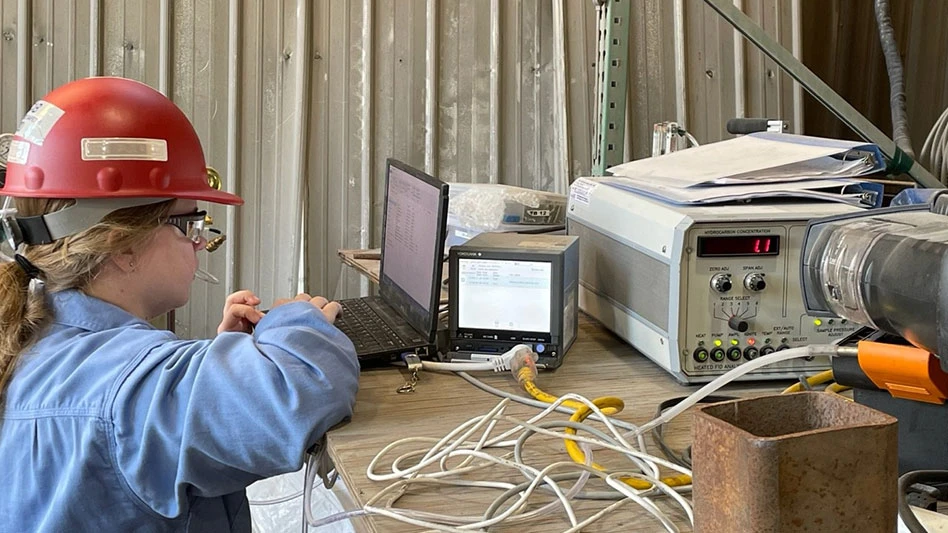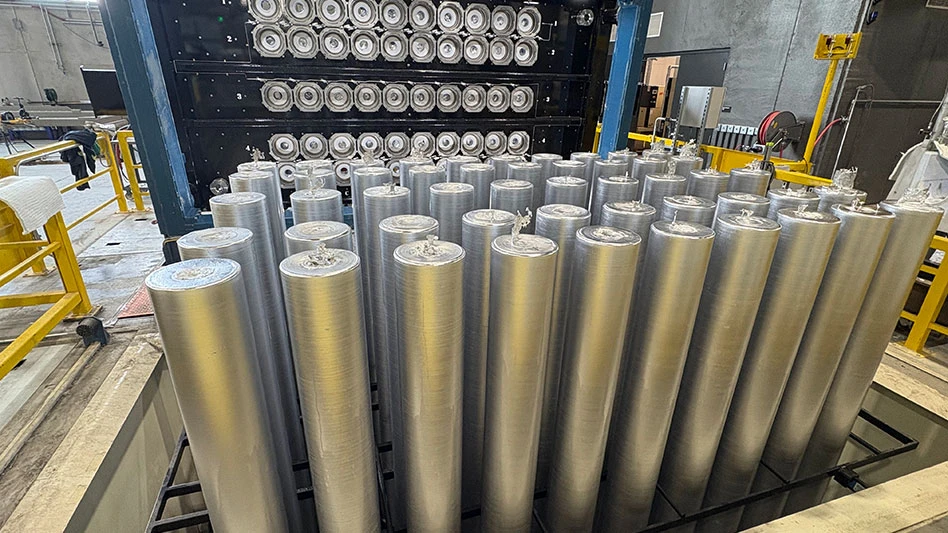
Photo courtesy of Aurubis AG
The Lisbon-based International Copper Study Group (ICSG) reports its 40-plus member nations produced more than 4.55 million metric tons (mmt) of recycled-content secondary copper in 2023.
That figure represents a 9.58 percent jump in output of secondary copper compared with 2022, or about 400,000 metric tons in volume.
The 4.55 mmt of secondary production comprised 16.9 percent of global output in 2023, up slightly from its 16.35 percent contribution in 2022.
Last year, more than 22.3 mmt of primary copper were made, representing 5.3 percent output growth compared with the more than 21.2 mmt produced the prior year.
According to the ICSG, the mined output of copper in 2023 did not grow nearly as fast as either primary or secondary production. “Preliminary data indicates that world copper mine production increased by about 1 percent in 2023, with concentrate production and solvent extraction-electrowinning (SX-EW) growing at a similar rate,” the ICSG says.
The world’s hunger for copper in 2023 checked in at a rate above the mined output increase but below growth rates for refinery production, with ICSG preliminary data suggesting that world apparent refined copper usage grew by about 4 percent in 2023.
While struggles in China’s construction sector are well documented, the nation’s manufacturing and export sectors helped it retain its copper consumption habit.
“Chinese apparent demand (excluding changes in bonded/unreported stocks), grew by around 9 percent,” the ICSG says. Meanwhile, Chinese net refined copper imports declined by 5 percent but refined production increased by 14 percent.
The 2023 figures also demonstrate lower demand in the European Union, Japan and the United States, according to ICSG, which it says negatively impacted refined copper demand in the rest of the world, which it estimates declined by about 2 percent.
U.S. Census Bureau statistics through November 2023 show 711,400 metric tons of secondary copper were produced in that time frame. About 603,000 metric tons of that total were made by brass and wire rod mills.
Through the same 11 months in 2022, total secondary copper output was slightly higher at more than 714,500 metric tons. However, U.S. brass and wire rod mills in 2023 are poised to increase their output in 2023, showing a 1.3 rise in production after 11 months.
This month, the copper price has surged on global exchanges such as the Comex and the London Metal Exchange (LME).
For the year 2023, the ICSG portrays the global refined copper balance as having faced a deficit from 87,000 metric tons to 113,000 metric tons, depending on how Chinese inventories are measured.
As of the end of January, copper inventories held at the major metal exchanges (LME, Comex and Shanghai Futures Exchange, or SHFE) totaled more than 217,400 metric tons. The ICSG calls that a 1.7 percent increase (of about 3,500 metric tons) compared with inventory held at the end of December 2023.
Regionally, inventories as of Jan. 31 were up by 63 percent at the SHFE, up by 24 percent on the Comex market and down by 12 percent in LME warehouses compared with 31 days earlier.
Get curated news on YOUR industry.
Enter your email to receive our newsletters.
Latest from Recycling Today
- Researchers consider recycling lottery outcomes
- Veolia plans large-scale plastics recycling facility in UK
- Ecore acquires New York tire processing firm
- Closed Loop Partners adds private equity managing director
- European Commission drafts new rules for chemically recycled content in plastic bottles
- Redwood Materials launches Redwood Energy
- Cirba Solutions announces new human resources executive
- Cascades to close packaging site in Niagara Falls, New York





